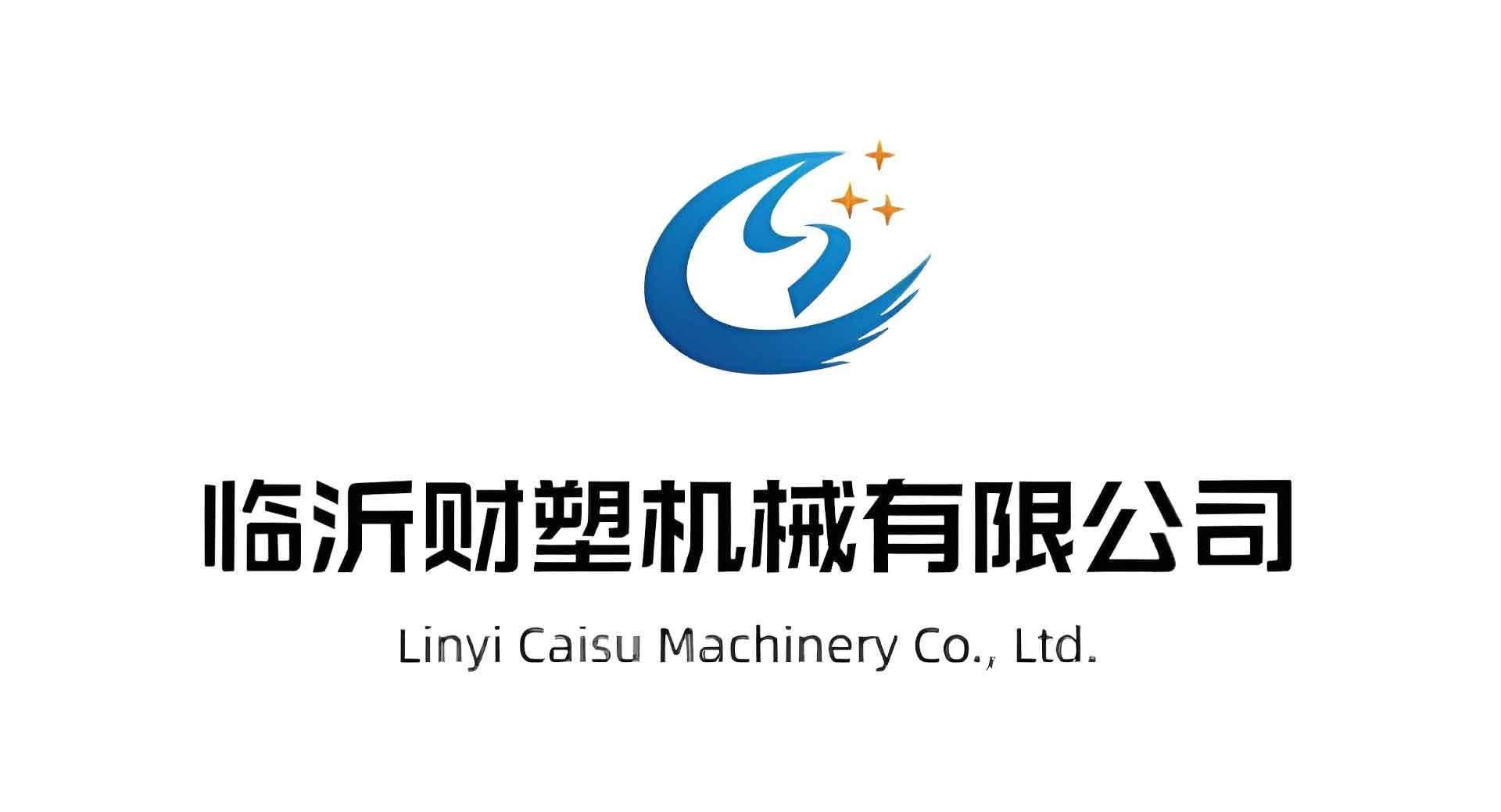Welcome to My Blog!
Before we dive into the content, I’d love for you to join me on my social media platforms where I share more insights, engage with the community, and post updates. Here’s how you can connect with me:
Facebook:https://www.facebook.com/profile.php?id=61567891941530
Now, let’s get started on our journey together. I hope you find the content here insightful, engaging, and valuable.
Caisu Machinery sells a variety of used plastic pipe production equipment. The products are of high quality and low price. Welcome to contact us for consultation and purchase. We will be happy to serve you.
Table of Contents
Introduction
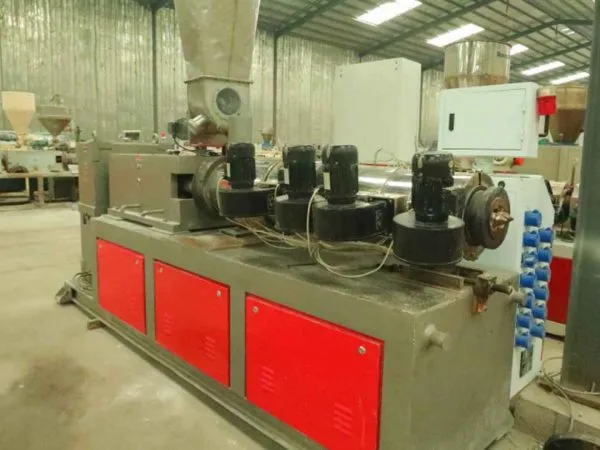
The working principle of a single screw extruder is one of the most versatile and widely used technologies in materials processing, enabling the continuous shaping of plastics and other materials into products such as pipes.
This blog comprehensively explores the mechanics, components, applications and optimization strategies behind the working principle of single screw extruders. I hope it can be helpful to you.
Understanding the Single Screw Extruder Working Principle
What Is the Single Screw Extruder Working Principle?
The single screw extruder working principle describes the process by which a single rotating screw conveys, compresses, melts, and shapes raw materials into a continuous product. The screw, housed in a cylindrical barrel, rotates to move material from a feed hopper to a die, transforming granules or powders into molten forms under heat and pressure. Key elements of the single screw extruder working principle include:
- Material Conveyance: The screw’s helical flights push material forward through friction and mechanical force.
- Melting and Mixing: Heat from barrel heaters (e.g., 150–300°C) and shear forces melt the material, ensuring homogeneity.
- Pressure Build-Up: The screw’s design compresses the melt, generating pressures (e.g., 10–30 MPa) to force it through a die.
- Shaping: The die shapes the molten material into products like sheets, tubes, or profiles, cooled for solidification.
This principle is fundamental to industries requiring precise material processing, from France’s packaging sector to Poland’s construction material production, per EU machinery standards like EN 60204-1.
Core Components Driving the Single Screw Extruder Working Principle
The single screw extruder working principle relies on several critical components working in unison:
- Screw: A helical, rotating element (e.g., 30–150 mm diameter) with sections for feeding, compression, and metering, designed to optimize material flow and shear.
- Barrel: A heated, cylindrical chamber (e.g., 1–6 meters long) housing the screw, often with multiple temperature zones for precise control.
- Feed Hopper: Introduces raw materials (e.g., polymer pellets, flour) into the screw, typically with a cooling jacket to prevent premature melting.
- Die: Shapes the extruded melt into the desired form, with designs like slot dies for films or annular dies for pipes.
- Drive System: An electric motor (e.g., 10–500 kW) powers screw rotation, with gearboxes ensuring speeds of 50–300 RPM.
- Heaters and Cooling Systems: Electric or oil heaters maintain barrel temperatures, while air or water cooling stabilizes the process.
These components, engineered to EU safety and performance standards (e.g., EN 12100), enable the single screw extruder working principle to deliver consistent output across diverse applications.
Why Is the Single Screw Extruder Working Principle Important?
The single screw extruder working principle is critical for its simplicity, efficiency, and versatility in material processing. Key reasons include:
- Continuous Production: Enables uninterrupted output, boosting productivity in high-volume industries like plastics manufacturing.
- Material Versatility: Processes polymers (e.g., polyethylene, PVC), food (e.g., cereals), and ceramics, supporting diverse markets.
- Precision Control: Allows fine-tuning of temperature, pressure, and screw speed for consistent product quality, per EN ISO 9001.
- Cost Efficiency: Lower energy consumption (e.g., 0.2–0.5 kWh/kg) compared to twin-screw extruders, ideal for cost-sensitive operations in Germany or Spain.
Understanding the single screw extruder working principle empowers manufacturers to optimize processes, reduce waste, and meet stringent EU environmental and quality regulations.
Mechanics of the Single Screw Extruder Working Principle
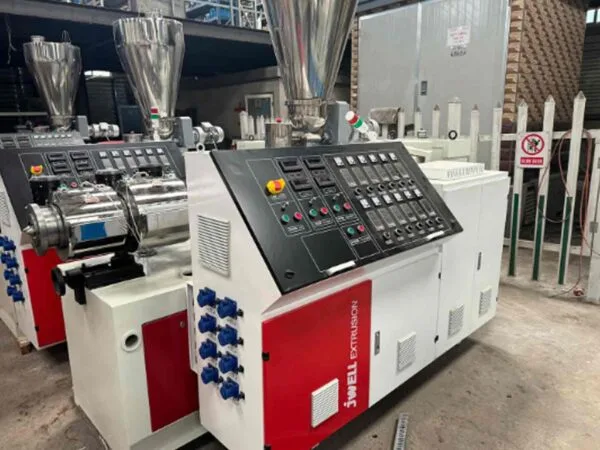
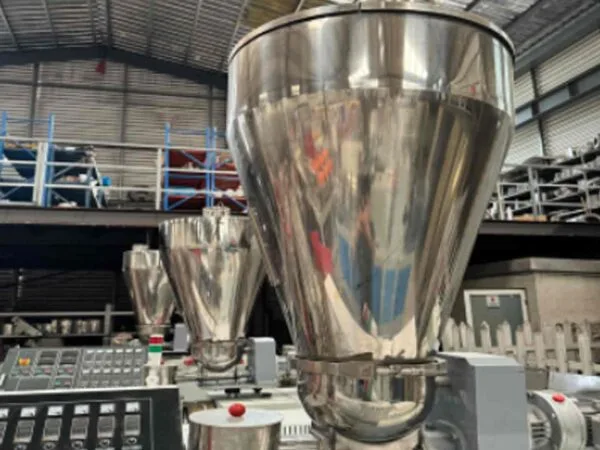
Feeding Zone in the Single Screw Extruder Working Principle
The feeding zone is the initial stage of the single screw extruder working principle, where raw materials enter the barrel via the hopper. Key mechanics include:
- Material Intake: Granules or powders are gravity-fed or force-fed, with screw flights designed for high friction to ensure consistent flow.
- Cooling: A water-cooled hopper throat (e.g., 20–40°C) prevents premature melting, maintaining solid-state conveyance.
- Screw Geometry: A deep flight depth (e.g., 10–20% of screw diameter) maximizes material volume, critical for high-throughput applications like pipe extrusion in the UK.
The feeding zone sets the foundation for the single screw extruder working principle, ensuring stable material supply for downstream processing, aligning with EN 1114-1 standards.
Compression Zone and the Single Screw Extruder Working Principle
In the compression zone, the single screw extruder working principle transitions material from solid to melt under increasing pressure and heat. Mechanics include:
- Screw Design: A decreasing flight depth (e.g., compression ratio of 2:1 to 4:1) compacts the material, increasing pressure (e.g., 5–15 MPa).
- Heat Input: Barrel heaters (150–250°C) and shear forces from screw rotation (50–200 RPM) melt the material, achieving a viscous state.
- Mixing: Screw flights promote homogeneity, critical for uniform product properties in applications like film extrusion in Italy.
The compression zone is pivotal, as it determines the melt quality, directly impacting the single screw extruder working principle’s efficiency and output consistency.
Metering Zone in the Single Screw Extruder Working Principle
The metering zone finalizes the single screw extruder working principle by delivering a uniform, pressurized melt to the die. Key mechanics include:
- Pressure Stabilization: A shallow flight depth (e.g., 5–10% of screw diameter) maintains high pressure (10–30 MPa) for consistent flow.
- Temperature Control: Precise heating (200–300°C) ensures optimal viscosity, preventing degradation or defects in products like profiles.
- Flow Regulation: The screw’s constant pitch ensures steady output, critical for continuous processes like cable coating in Germany.
The metering zone ensures the single screw extruder working principle produces high-quality, defect-free products, meeting EU quality standards like EN ISO 6721.
Die Shaping and the Single Screw Extruder Working Principle
The die is the final stage of the single screw extruder working principle, shaping the molten material into the desired form. Mechanics include:
- Die Design: Custom geometries (e.g., slot for sheets, annular for tubes) control product dimensions, with tolerances as low as ±0.1 mm.
- Pressure Management: The die maintains back pressure (5–20 MPa) to prevent flow instabilities, ensuring uniform extrusion.
- Cooling Integration: Post-die cooling (e.g., water baths at 10–30°C) solidifies the product, preserving shape and strength, as seen in pipe production in Spain.
The die’s role in the single screw extruder working principle is critical for achieving precise, application-specific outputs, supporting industries from packaging to construction.
Heat and Shear in the Single Screw Extruder Working Principle
Heat and shear are fundamental to the single screw extruder working principle, driving material transformation. Key aspects include:
- External Heating: Barrel heaters, often with PID controllers, maintain zoned temperatures (e.g., 150°C feed, 250°C metering), ensuring consistent melting.
- Shear Heating: Screw rotation generates frictional heat (contributing 20–50% of total heat), influenced by screw speed and material viscosity.
- Thermal Balance: Cooling systems (e.g., air fans, water jackets) prevent overheating, protecting material properties and equipment, per EN 60204-1.
Balancing heat and shear optimizes the single screw extruder working principle, ensuring energy efficiency and product quality in European manufacturing.
Comparison Table of Single Screw Extruder Configurations
To assist in understanding the single screw extruder working principle across different applications, the following table compares key configurations, screw designs, and material types. This reference aids engineers and manufacturers in selecting the appropriate setup, without including pricing information.
| Configuration | Screw L/D Ratio | Material Type | Typical Applications | Advantages | Limitations |
|---|---|---|---|---|---|
| General Purpose | 24:1–30:1 | Polyethylene, PVC | Pipes, films, profiles | Versatile, simple design | Limited mixing for complex materials |
| High-Output | 30:1–36:1 | Polypropylene, ABS | Sheets, cable coatings | High throughput, uniform melt | Higher energy use, complex cooling |
| Food Extrusion | 20:1–24:1 | Starch, proteins | Snacks, pet food | Hygienic, precise control | Lower shear for tough materials |
| Specialty | 28:1–32:1 | Rubber, ceramics | Medical tubing, technical parts | High precision, custom dies | Slower output, specialized setup |
| Vented | 30:1–34:1 | Hygroscopic polymers | Recycled plastics, foams | Removes volatiles, high quality | Complex maintenance, slower process |
This table illustrates how the single screw extruder working principle adapts to diverse materials and applications, supporting industries like plastics in Germany or food processing in France, per EU standards.
Applications of the Single Screw Extruder Working Principle
Single Screw Extruder Working Principle in Plastics Manufacturing
The plastics industry relies heavily on the single screw extruder working principle for producing pipes, films, and profiles. Key applications include:
- Pipe Extrusion: Produces PVC or HDPE pipes (e.g., 20–400 mm diameter) for plumbing and irrigation, common in Spain’s construction sector.
- Film Extrusion: Creates thin films (0.01–0.5 mm) for packaging, with precise die control ensuring uniformity, per EN ISO 7765.
- Profile Extrusion: Shapes complex profiles for window frames or automotive trims, requiring high-pressure metering in Germany’s manufacturing plants.
The single screw extruder working principle’s simplicity and efficiency make it ideal for high-volume plastics production, supporting Europe’s circular economy goals.
Single Screw Extruder Working Principle in Food Processing
In food processing, the single screw extruder working principle transforms raw ingredients into snacks, cereals, and pet food. Applications include:
- Snack Production: Extrudes starch-based mixes into puffed snacks, with controlled shear for texture, common in the UK’s food industry.
- Pasta Manufacturing: Shapes dough into precise forms, using low-shear screws to preserve quality, per EN 1672-2 standards.
- Pet Food: Produces kibble with uniform size and nutrition, requiring hygienic barrels, as seen in France’s pet food sector.
The single screw extruder working principle ensures consistent, safe food products, aligning with EU food safety regulations like Regulation 1935/2004.
Single Screw Extruder Working Principle in Rubber and Composites
The rubber and composites industries use the single screw extruder working principle for specialized products. Applications include:
- Rubber Profiles: Extrudes seals or gaskets for automotive use, with high-pressure dies ensuring precision in Italy’s manufacturing sector.
- Composite Materials: Processes polymer-ceramic blends for technical parts, requiring robust screws, common in Poland’s industrial applications.
- Medical Tubing: Produces flexible, biocompatible tubes with tight tolerances, per ISO 10993 standards.
The single screw extruder working principle’s adaptability supports niche, high-value products, enhancing Europe’s advanced manufacturing capabilities.
Single Screw Extruder Working Principle in Recycling
The recycling industry leverages the single screw extruder working principle to process post-consumer plastics. Applications include:
- Pelletizing: Converts shredded plastics into reusable pellets, with vented screws removing moisture, common in Germany’s recycling plants.
- Sheet Extrusion: Produces recycled plastic sheets for packaging, supporting EU Directive 2019/904 on single-use plastics.
- Foam Extrusion: Creates lightweight foams from recycled polymers, requiring precise temperature control.
The single screw extruder working principle promotes sustainability, aligning with Europe’s circular economy and waste reduction goals.
Optimization and Maintenance of the Single Screw Extruder Working Principle
Optimizing the Single Screw Extruder Working Principle
To maximize the efficiency of the single screw extruder working principle, operators can implement optimization strategies:
- Screw Design: Select L/D ratios (e.g., 30:1 for high output) and compression ratios (2:1–4:1) based on material viscosity and application.
- Temperature Control: Use zoned heating (e.g., 150°C feed, 250°C die) and PID controllers to prevent material degradation, per EN 61439.
- Screw Speed: Adjust RPM (50–300) to balance shear and output, optimizing energy use for applications like film extrusion.
- Material Pre-Processing: Dry hygroscopic materials (e.g., PET) to below 0.02% moisture to prevent defects, common in Spain’s plastics sector.
These strategies enhance the single screw extruder working principle, boosting throughput and quality in European manufacturing.
Maintenance for the Single Screw Extruder Working Principle
Regular maintenance ensures the single screw extruder working principle operates reliably. Key tasks include:
- Screw and Barrel Inspection: Check for wear (e.g., 0.1 mm clearance increase) and replace components to maintain pressure, per EN 12100.
- Heater Calibration: Verify temperature accuracy (±2°C) to prevent overheating, critical for food extrusion in France.
- Lubrication: Apply high-temperature grease to gearboxes and bearings to reduce friction, extending drive system life.
- Die Cleaning: Remove residue to prevent blockages, ensuring consistent output for pipe extrusion in the UK.
Proactive maintenance minimizes downtime, ensuring the single screw extruder working principle delivers consistent performance.
Environmental and Economic Benefits of the Single Screw Extruder Working Principle
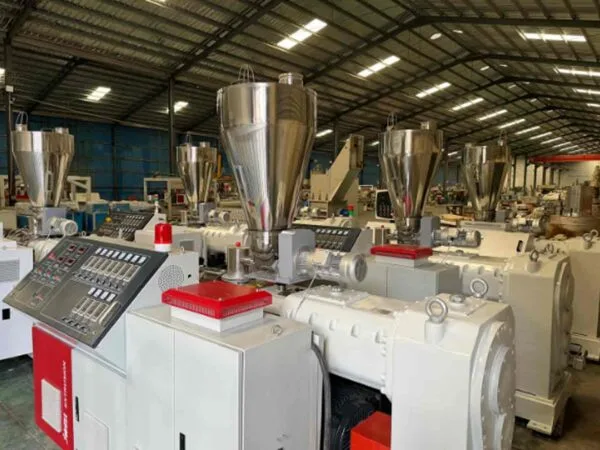
Environmental Sustainability and the Single Screw Extruder Working Principle
The single screw extruder working principle supports sustainability by enhancing efficiency and reducing waste:
- Energy Efficiency: Consumes 0.2–0.5 kWh/kg, lower than twin-screw systems, aligning with EU energy efficiency standards (EN 16796).
- Recycling Support: Processes recycled plastics, reducing landfill use and supporting Directive 2008/98/EC on waste management.
- Material Optimization: Precise control minimizes scrap, conserving resources in packaging or construction applications.
These eco-friendly features make the single screw extruder working principle a sustainable choice for Europe’s green manufacturing initiatives.
Economic Advantages of the Single Screw Extruder Working Principle
The single screw extruder working principle offers significant economic benefits:
- Low Operating Costs: Energy-efficient design reduces utility expenses, critical for high-volume production in Germany.
- High Throughput: Continuous operation (e.g., 100–1000 kg/h) maximizes revenue in plastics or food industries.
- Versatility: Single setup handles multiple materials, reducing equipment investment for manufacturers in Italy or Spain.
These advantages make the single screw extruder working principle a cost-effective solution for competitive industrial markets.
Conclusion
The working principle of the single screw extruder is the cornerstone of modern material processing, driving efficiency and precision in industries ranging from plastics to food production.
If you want to know more about our products, you can contact us and we will give you professional answers.
Need a Reliable Extruder Solution?
We offer high-performance single screw extruders designed for efficient plastic processing, durability, and consistent output. Perfect for your next production upgrade.
FAQ
What is the single screw extruder working principle?
The single screw extruder working principle involves a rotating screw conveying, melting, and shaping materials through a heated barrel and die, used for plastics, food, and rubber products.
Why is the single screw extruder working principle important?
It enables continuous, efficient processing of diverse materials, ensuring high-quality output and cost savings in industries like packaging and food production, per EN ISO 9001.
What components drive the single screw extruder working principle?
Key components include the screw, barrel, feed hopper, die, drive system, and heaters, working together to convey, melt, and shape materials, per EN 60204-1 standards.
How does the compression zone affect the single screw extruder working principle?
The compression zone melts and compacts materials under heat (150–250°C) and pressure (5–15 MPa), ensuring a homogeneous melt for uniform products like films or pipes.
What industries use the single screw extruder working principle?
Plastics, food processing, rubber, composites, and recycling industries rely on it for pipes, snacks, seals, and recycled pellets, supporting EU sustainability goals.
